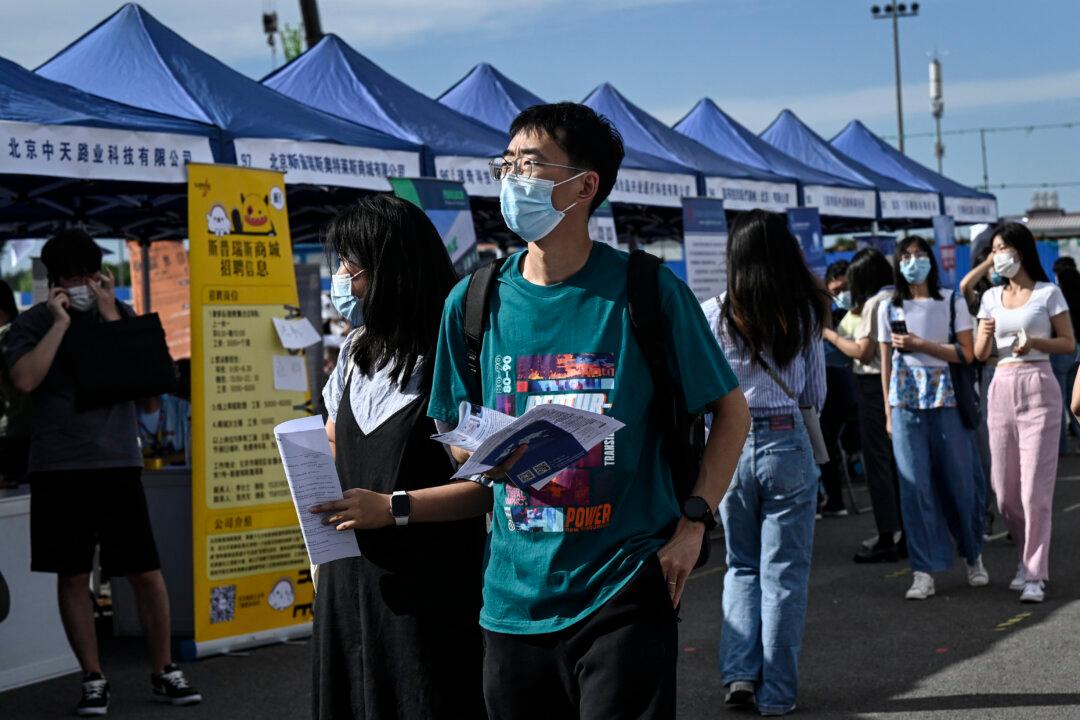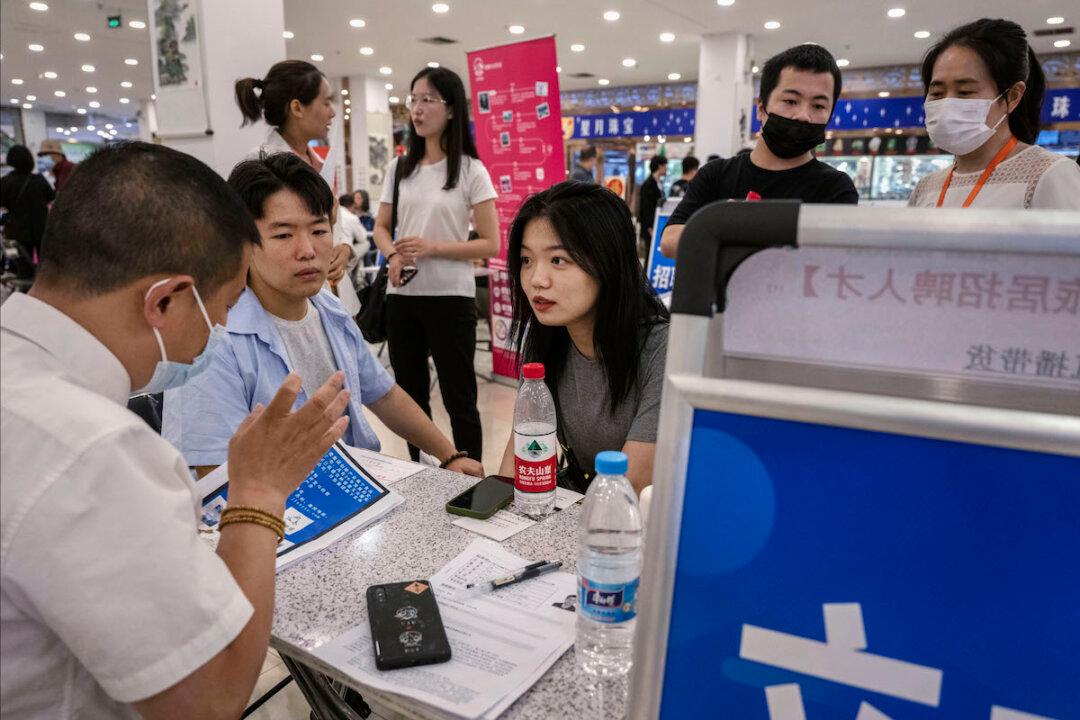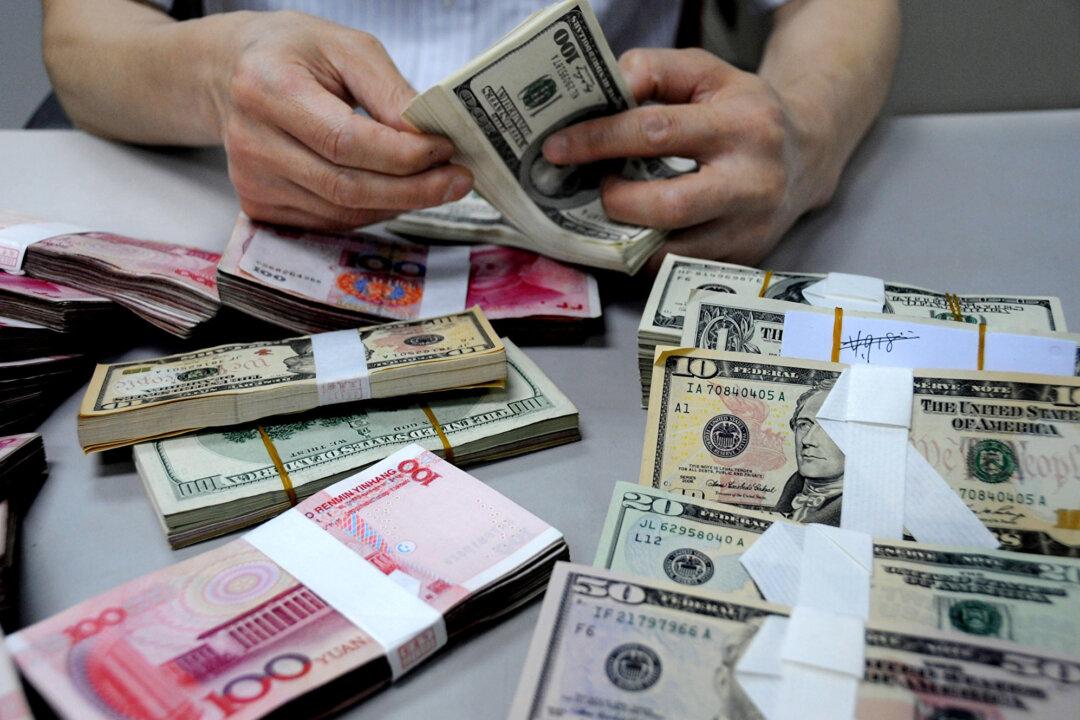Employment prospects are dim for China’s college graduates amid an economic slowdown.
While the number of graduates entering the job market has significantly increased, small- and medium-sized enterprises—the primary employers of new graduates—have suffered mass closures due to the Chinese Communist Party’s (CCP) three-year “zero-COVID” policy. Consequently, graduates are under unprecedented pressure to find work.






